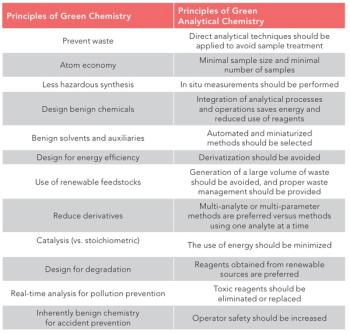
Liquid Chromatography: Stationary Phase Architecture
An innovative oral session called Liquid Chromatography: Stationary Phase Architecture chaired by Richard A. Henry from Supleco/Sigma Aldrich (Bellefonte, Pennsylvania) begins at 8:00 a.m. today in room 311C.
Session 430, Room 311C
An innovative oral session called Liquid Chromatography: Stationary Phase Architecture chaired by Richard A. Henry from Supleco/Sigma Aldrich (Bellefonte, Pennsylvania) begins at 8:00 a.m. today in Room 311C.
The discussion kicks off with an interesting presentation on the Characterization of Carbon-modified Silicas for Analytical Liquid Chromatography by Stephen R .Groskreutz from Gustavaus Adolphus College (St. Peter, Minnesota) followed by a talk on Using Solvent Particle Interactions to Predict Slurry Packing and Performance of 1.2 µm Superficially Porous Particles Packed in Capillary Columns for Liquid Chromatography by Laura Blue from the University of North Carolina (Chapel Hill, North Carolina).
A research project on the Performance Reproducibility of Chromatographic Columns Packed With Sub-3 µm Core-Shell Particles is described by Fabrice Gritti from the University of Tennessee-Knoxville (Knoxville, Tennessee). Richard A. Henry will then discuss the Equivalency of Selectivity Plots for Porous and Superficially Porous Particles.
A short interval in the proceedings is followed by a lecture by Chuan-Hsi Hung from Brigham Young University (Provo, Utah) on the Comparison of Efficiencies of Diamond-based Core-Shell Materials for HPLC Made with Different Sizes of Nano-diamonds and Core Carbon Particles.
1.2 µm Large Pore, Thin-shell Superficially Porous Particles and their Chromatographic Performance in Capillary LC Columns is described by James W, Treadway from the University of North Carolina at Chapel Hill (Chapel Hill, North Carolina) followed by a talk on the Evaluation of 2 µm Nonporous Organolsilica Hybrid Particles for LC by Amber Moore from SUNY at Buffalo (Buffalo, New York).
The session closes with a presentation by Xiaddong Liu from Thermo Fisher Scientific (Sunnyvale. California) on High Performance Speciality Columns for Surfactant Analysis.
Newsletter
Join the global community of analytical scientists who trust LCGC for insights on the latest techniques, trends, and expert solutions in chromatography.




